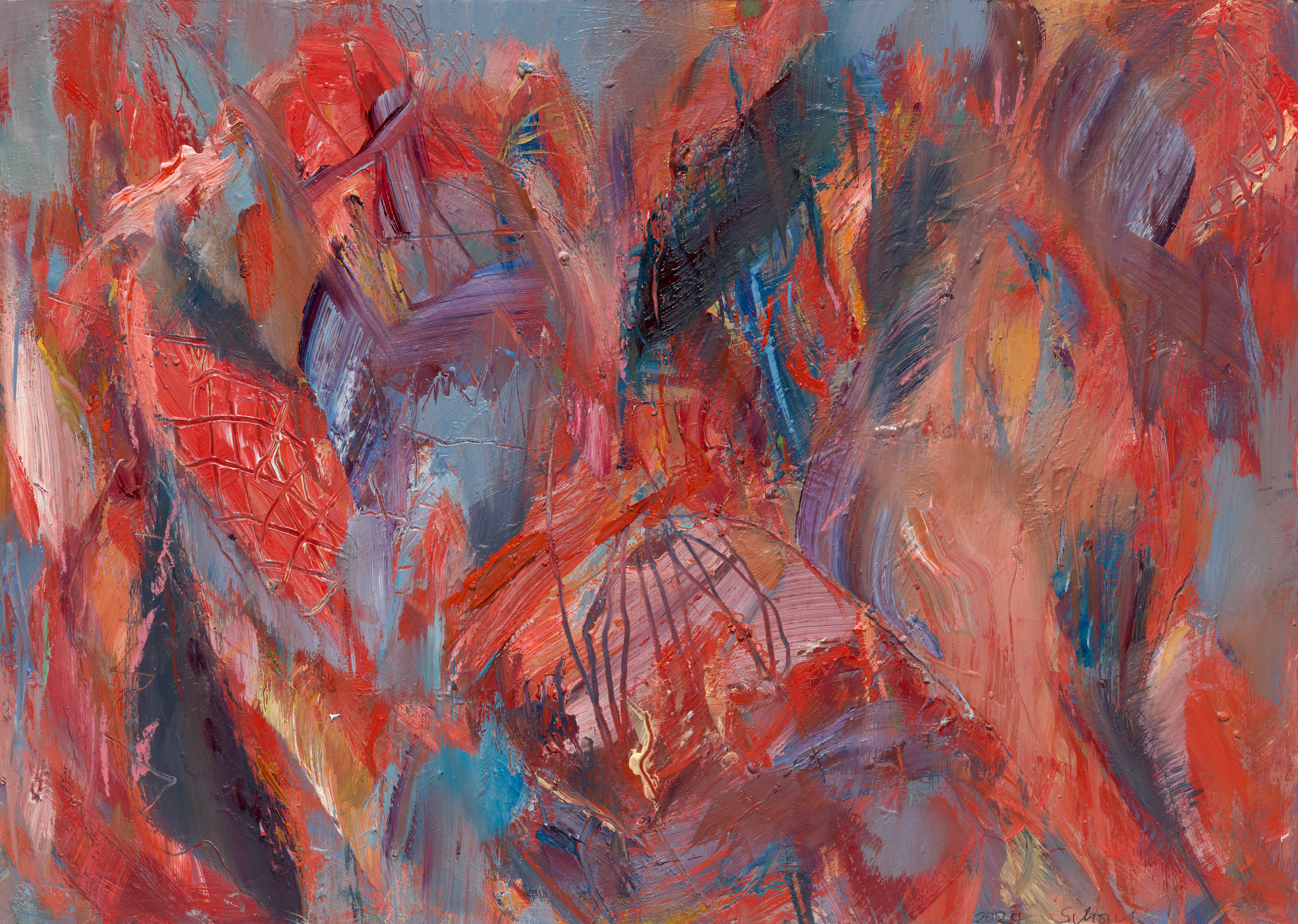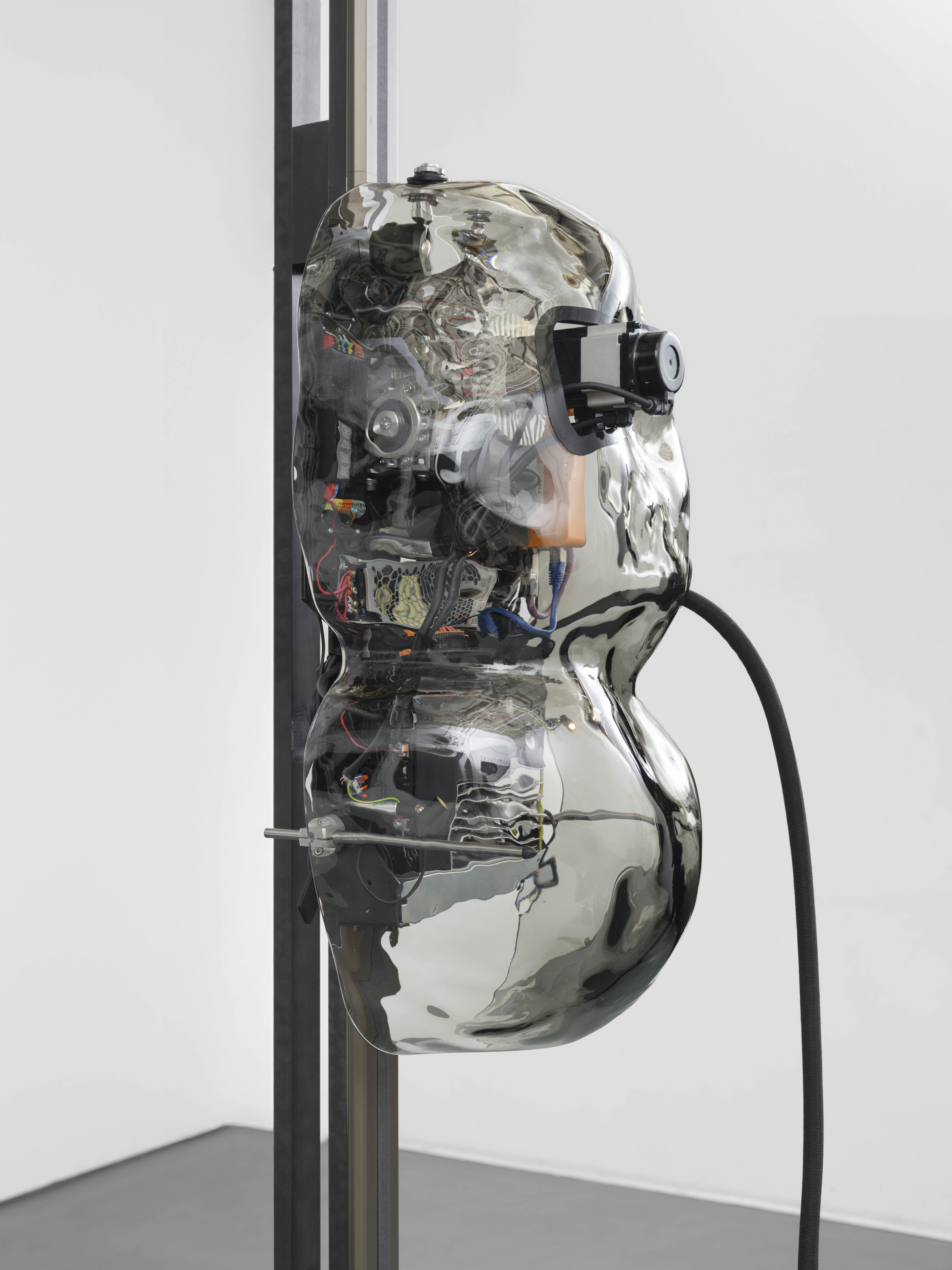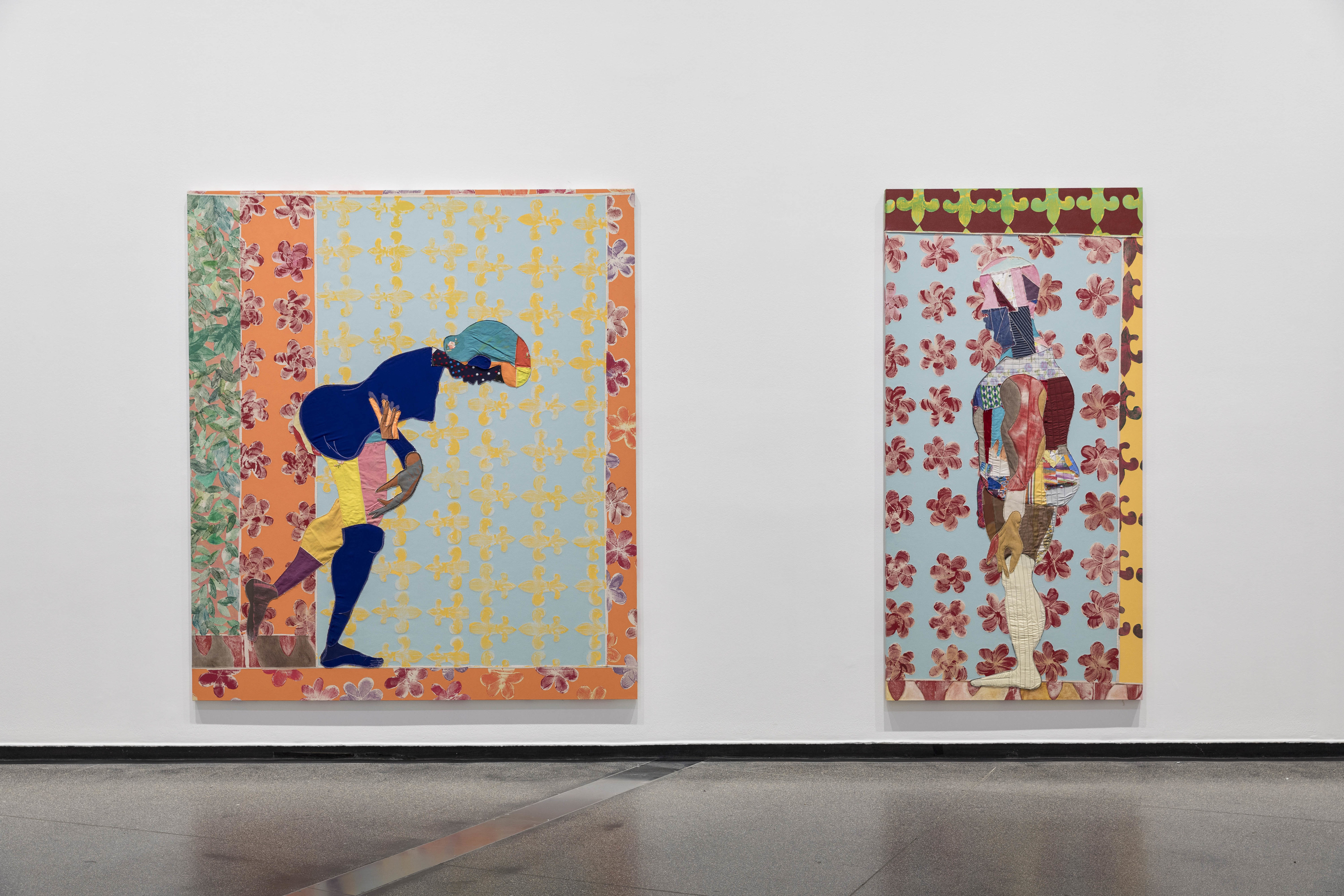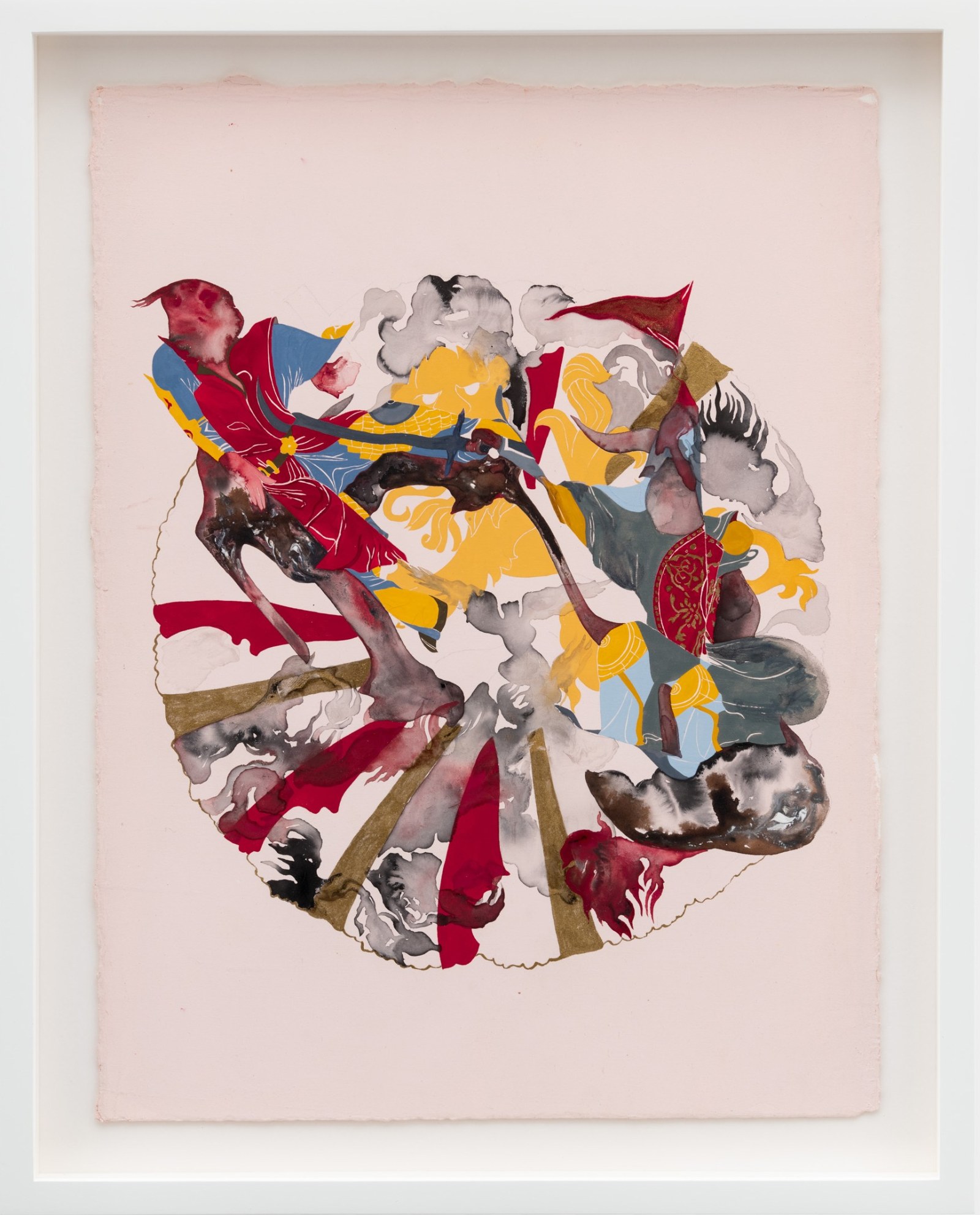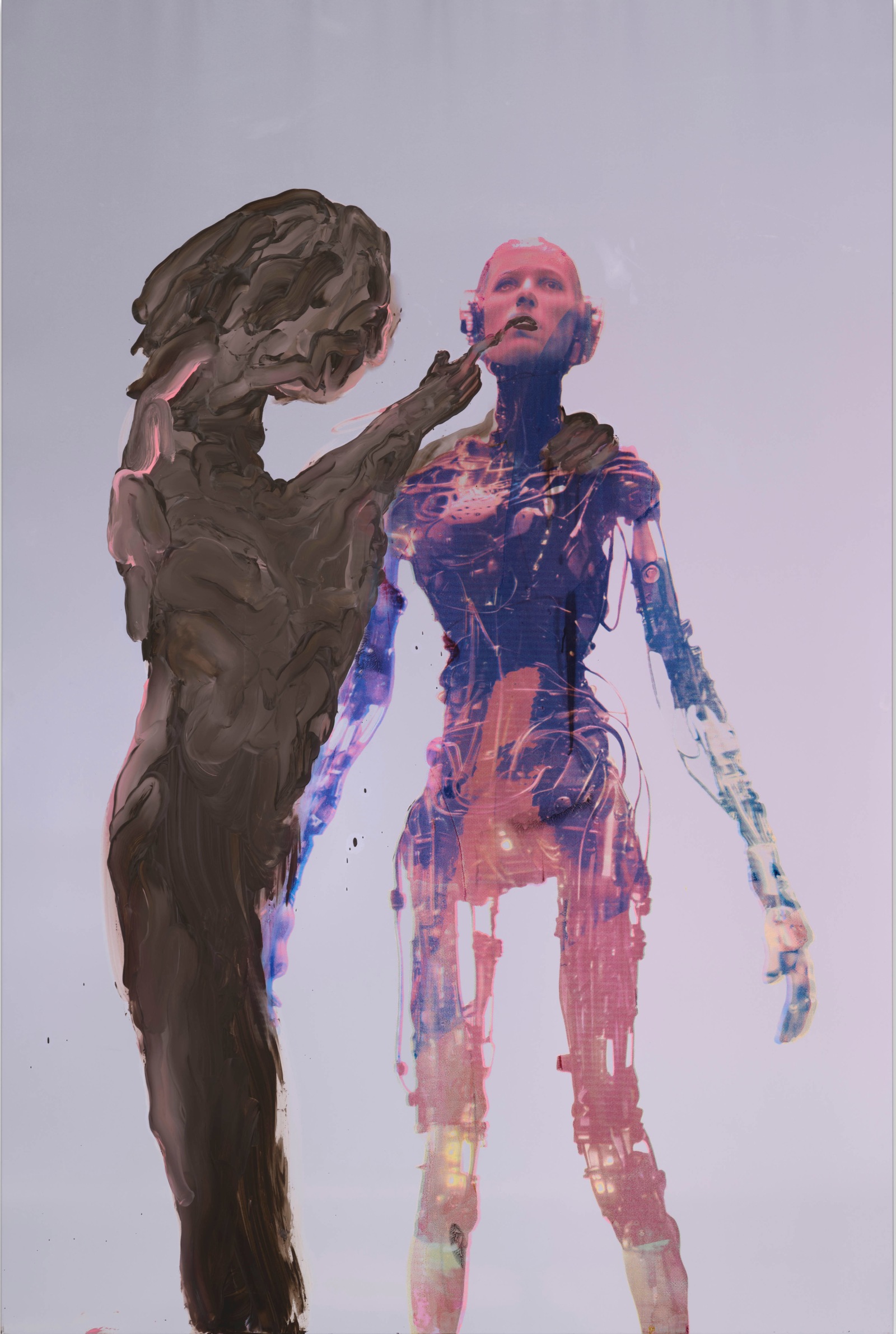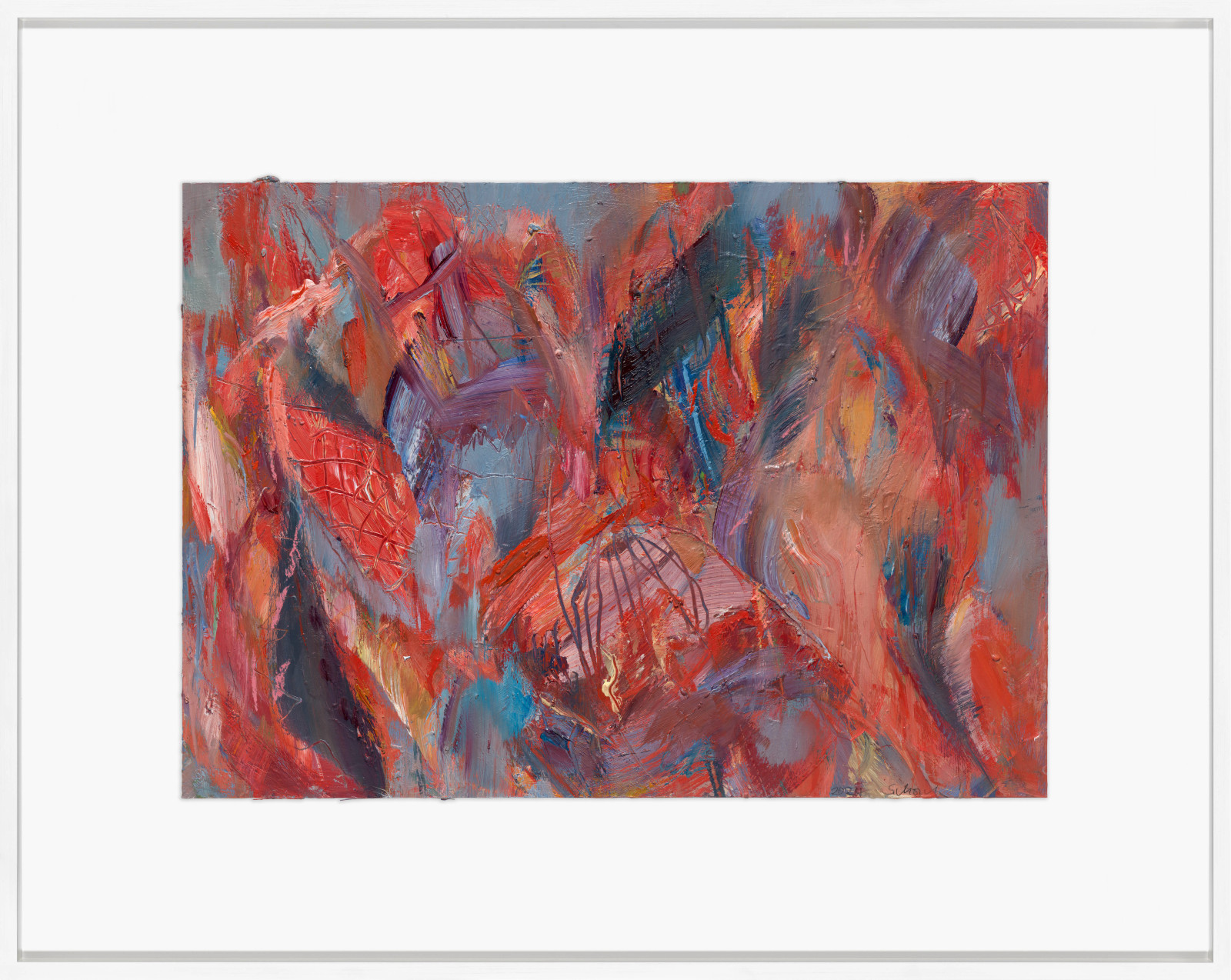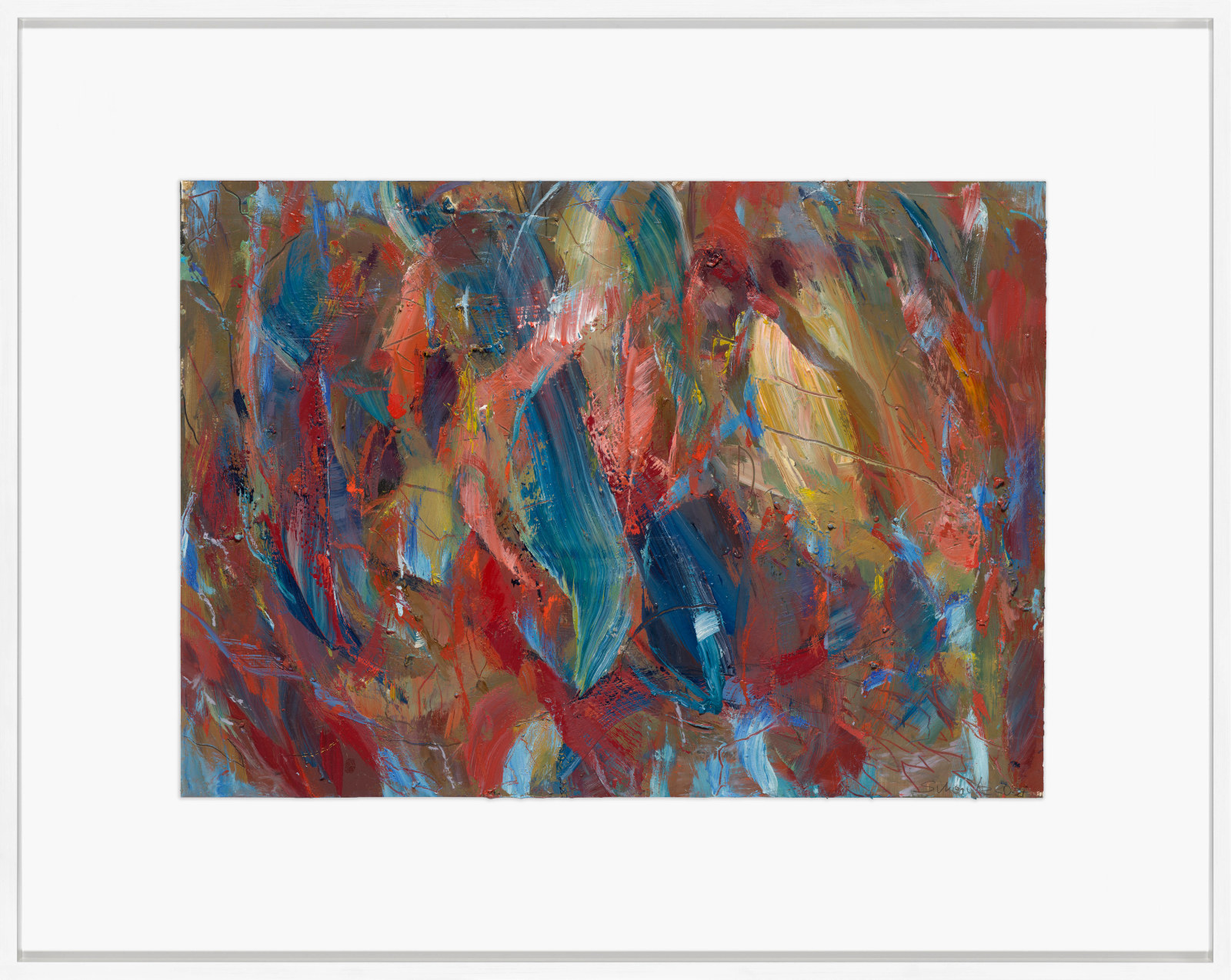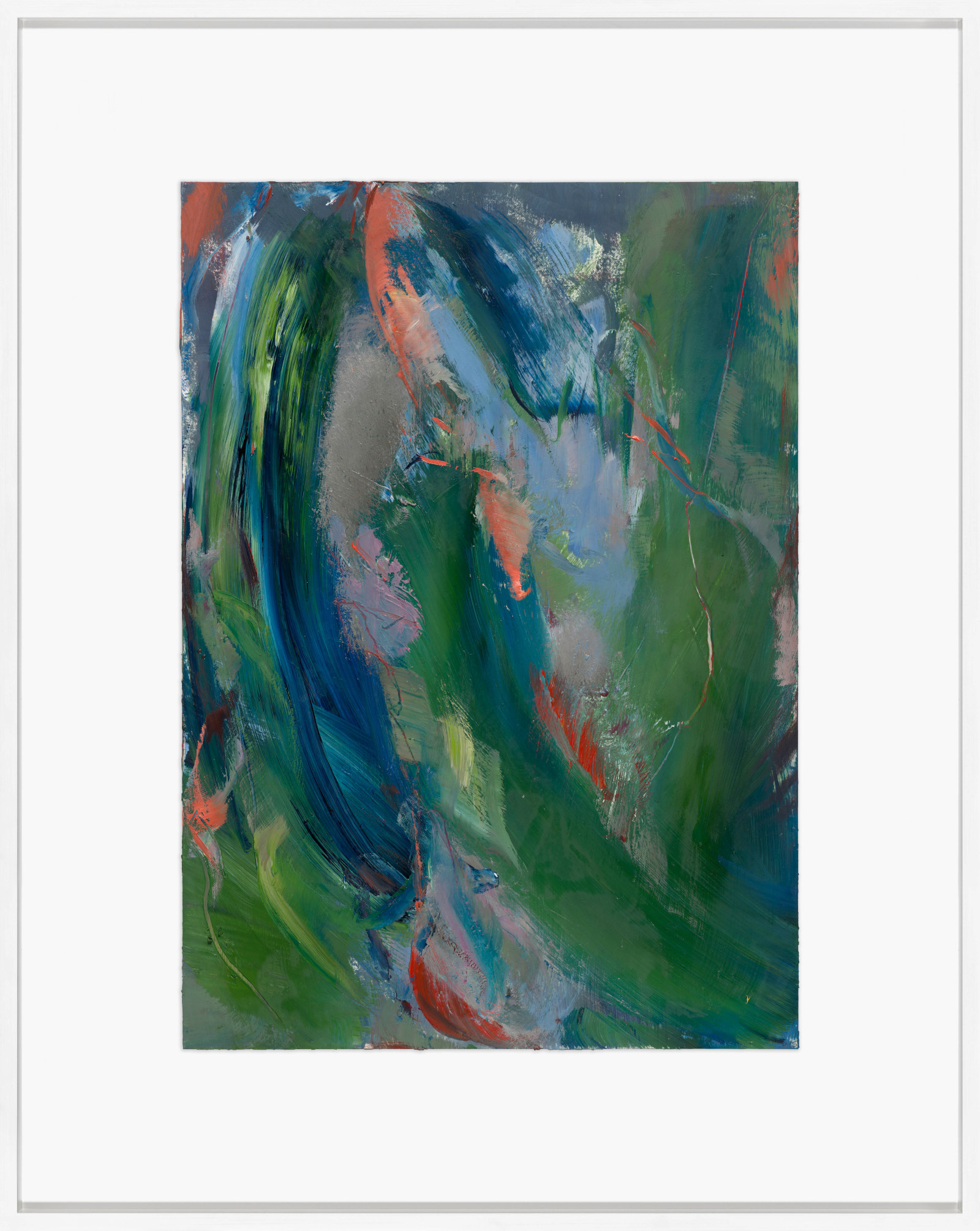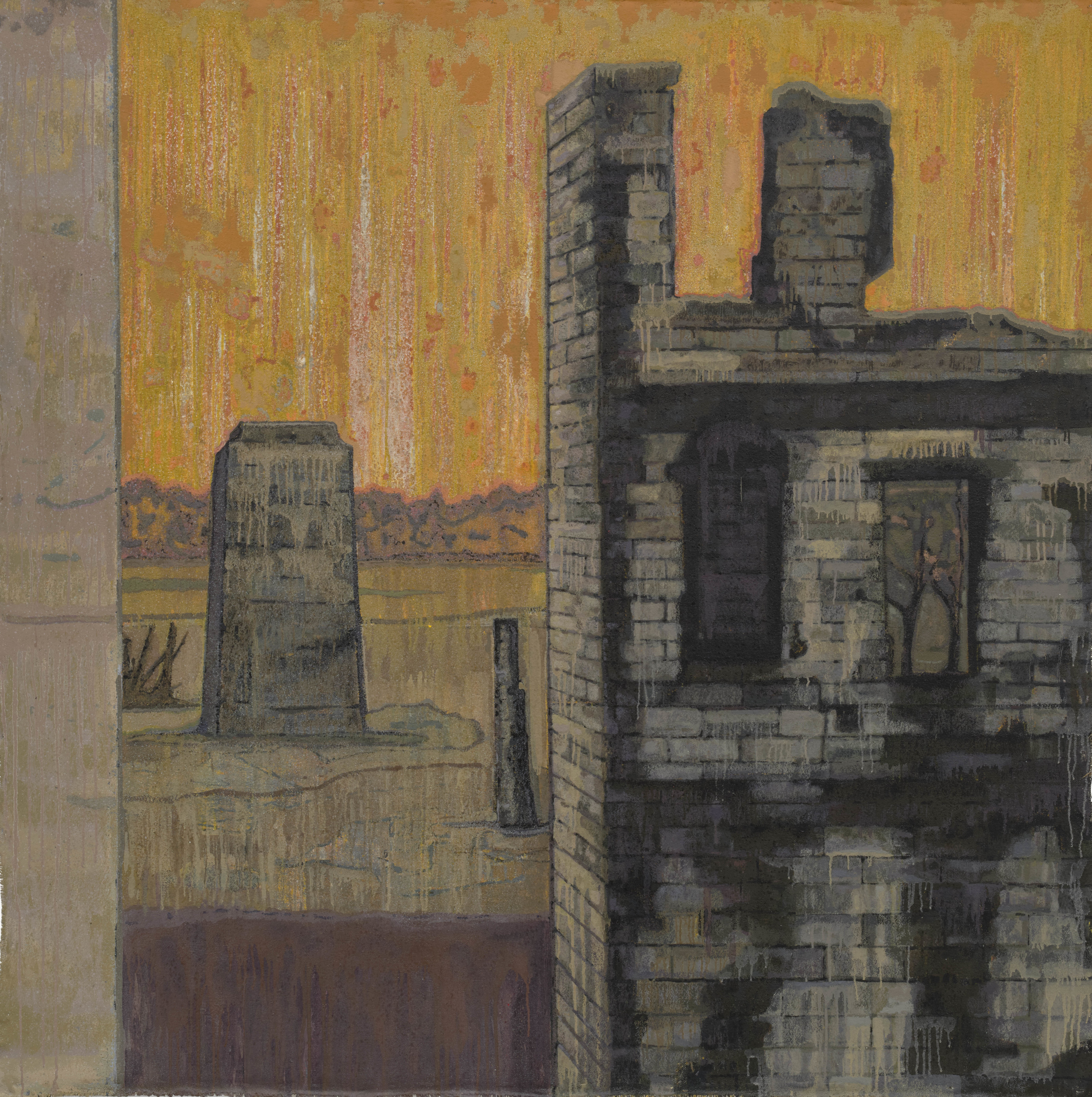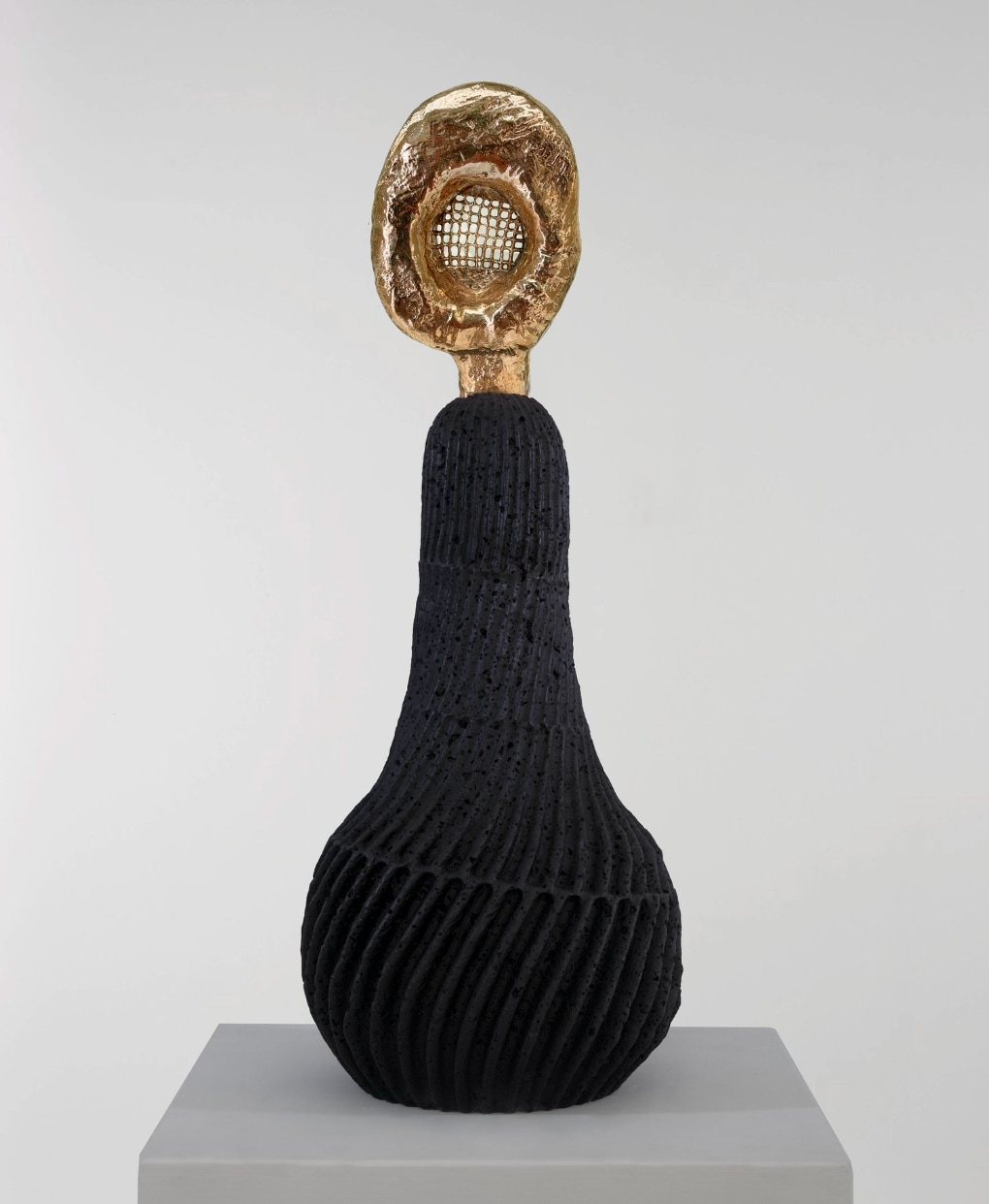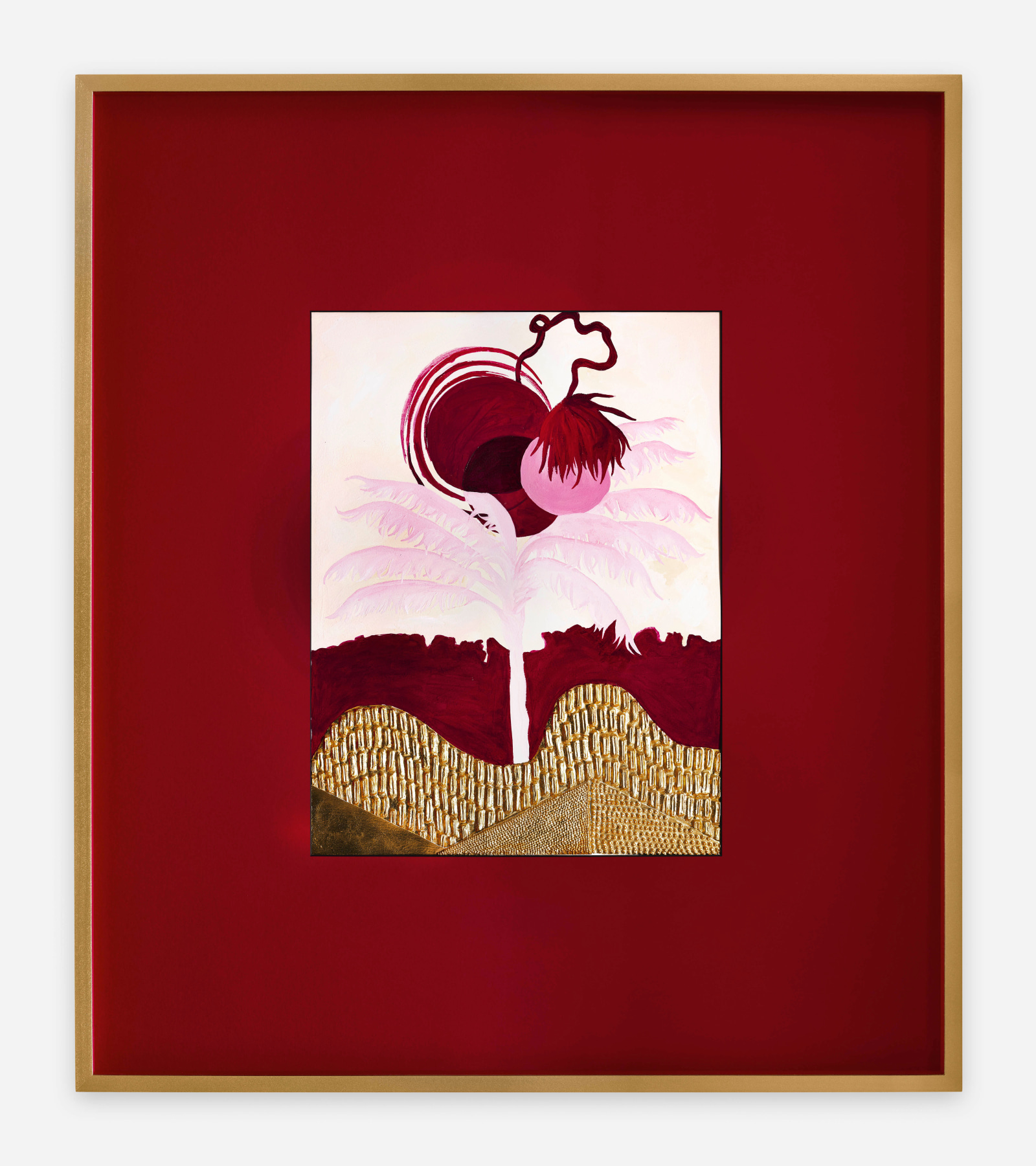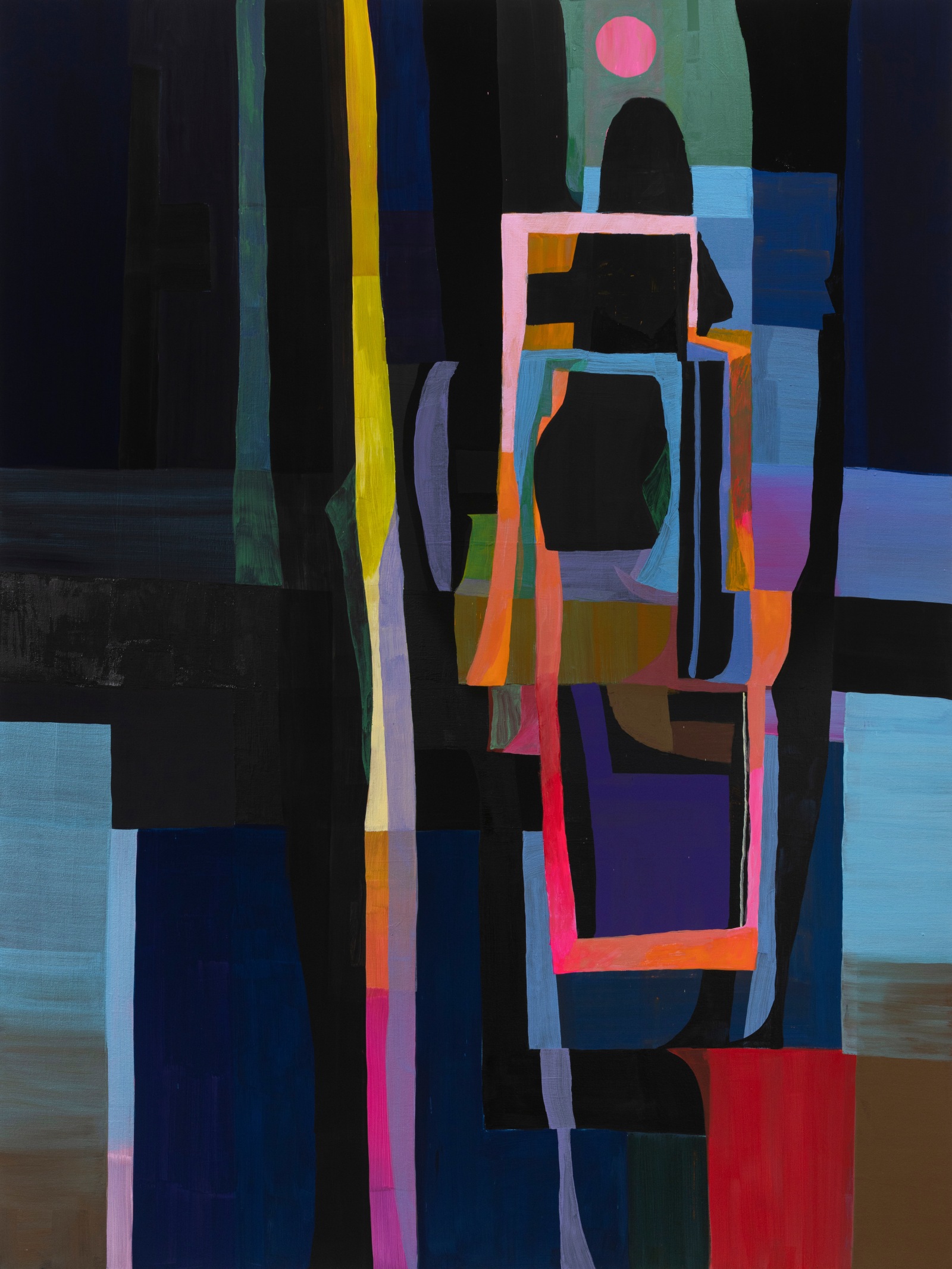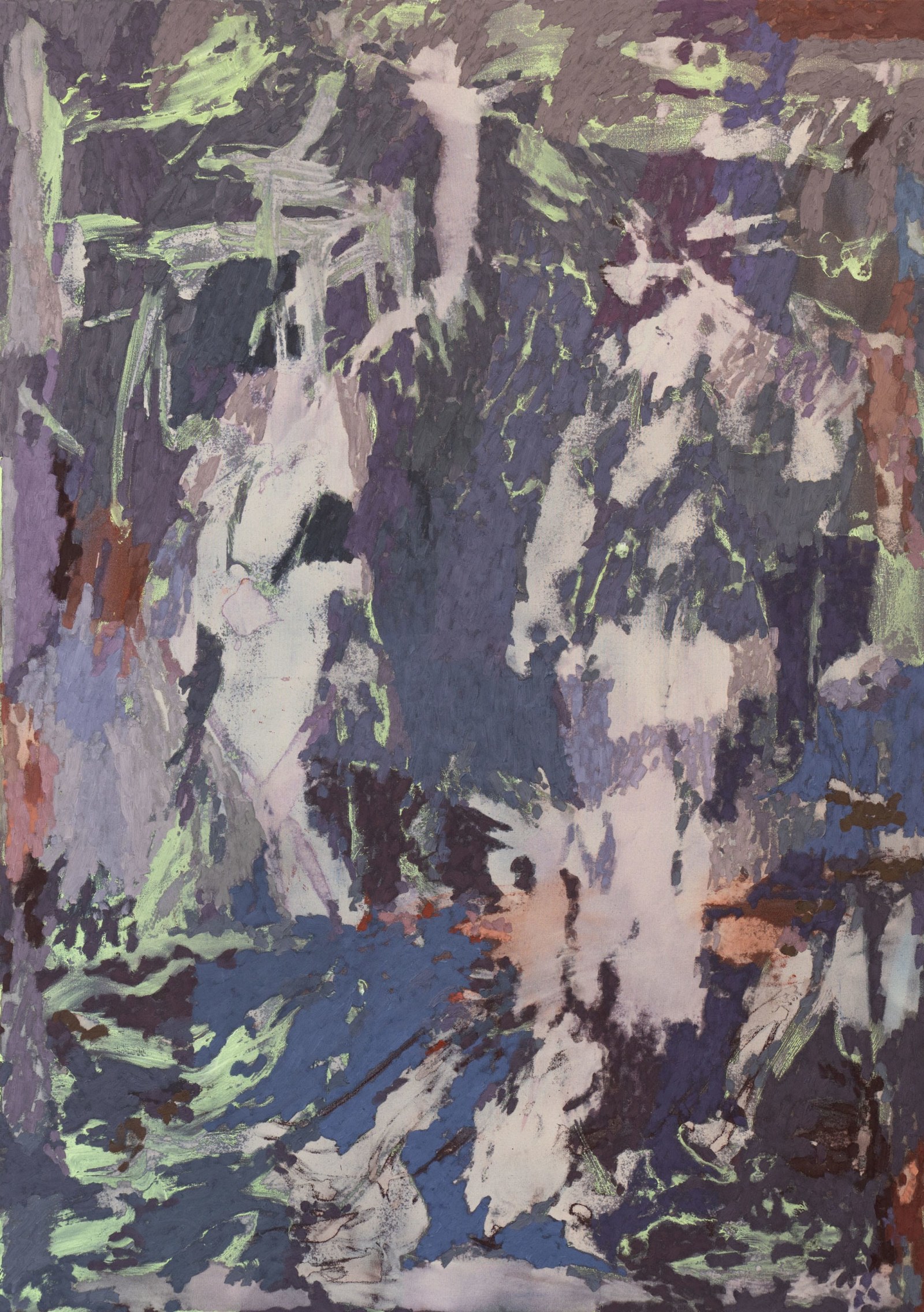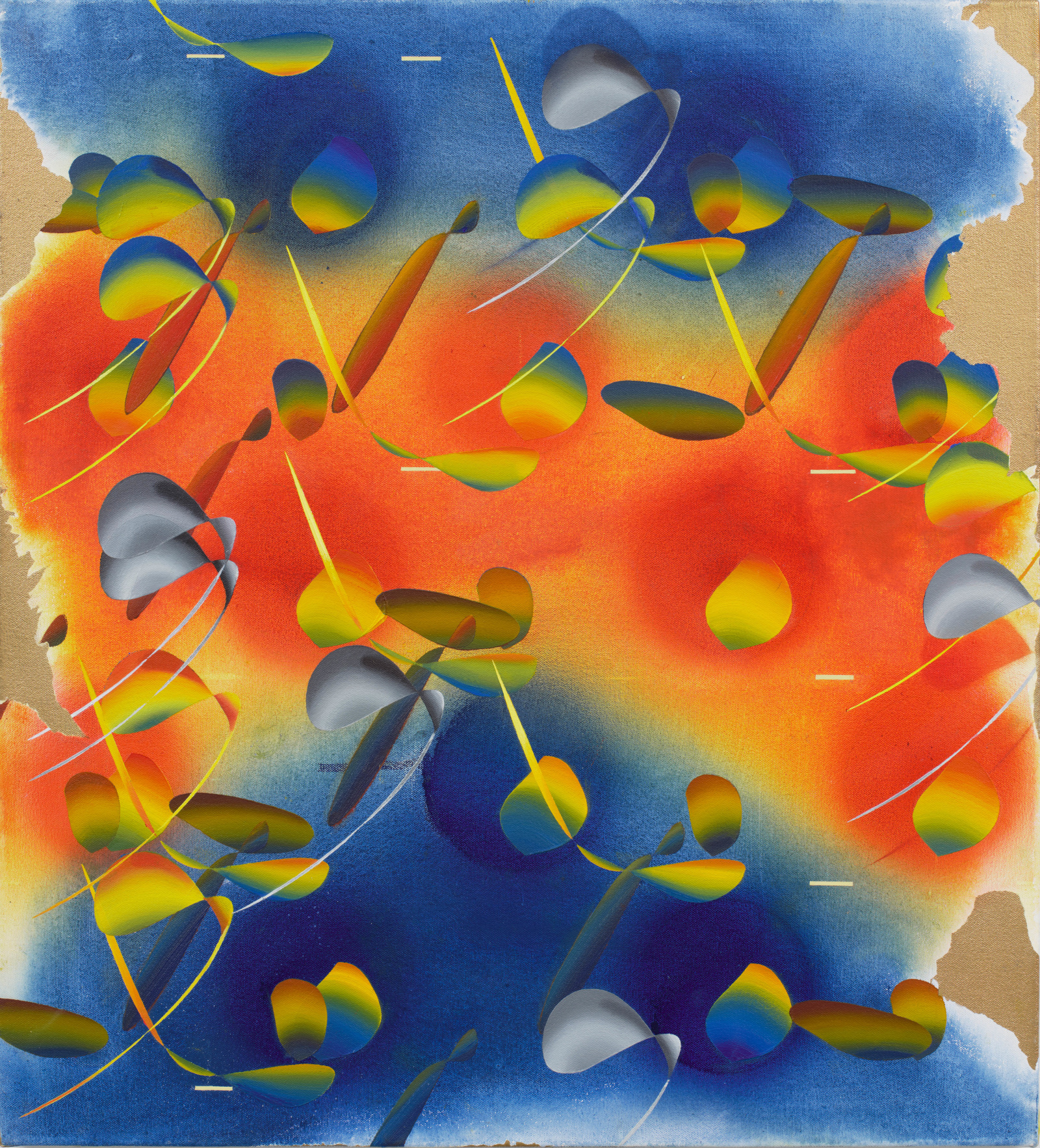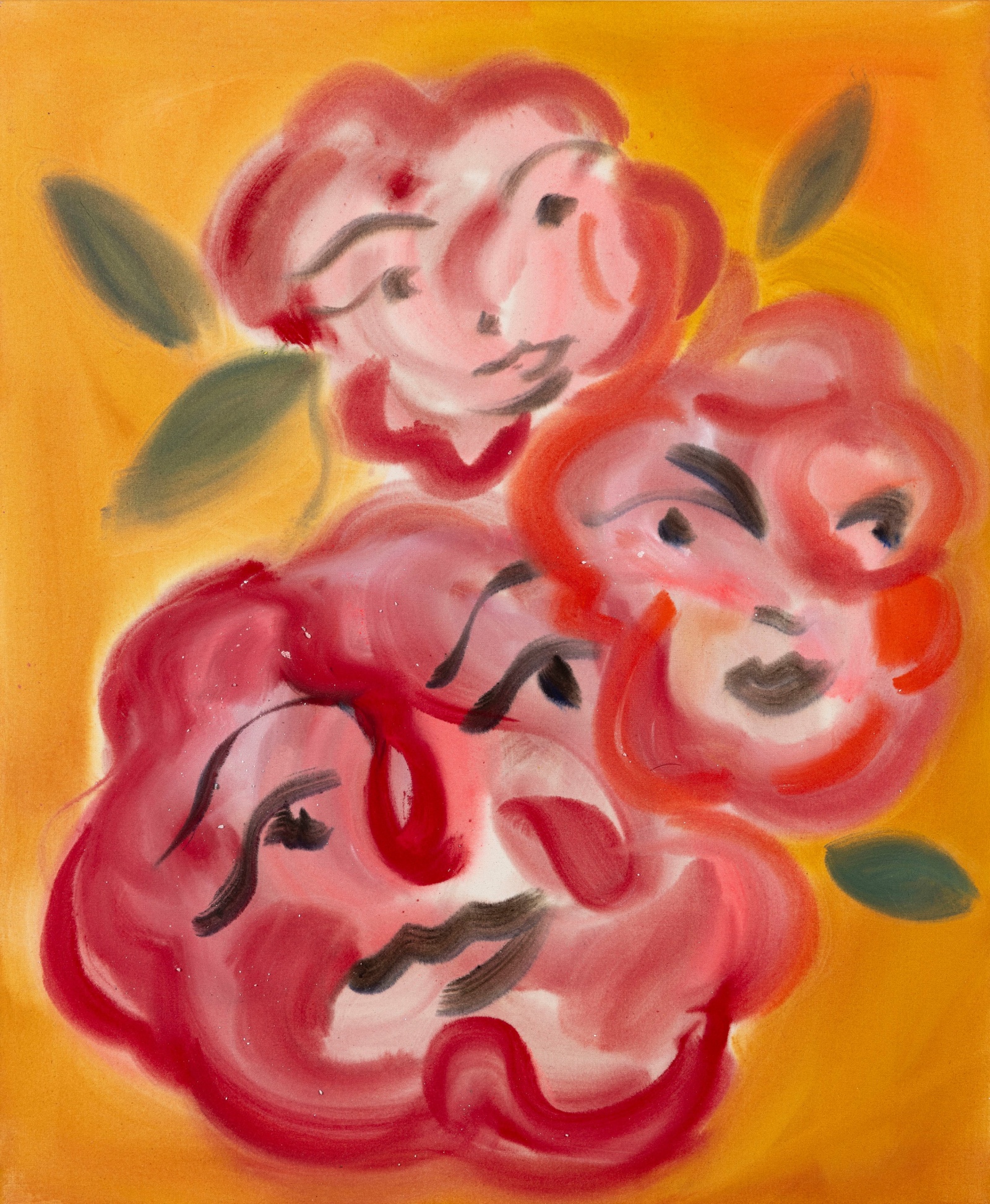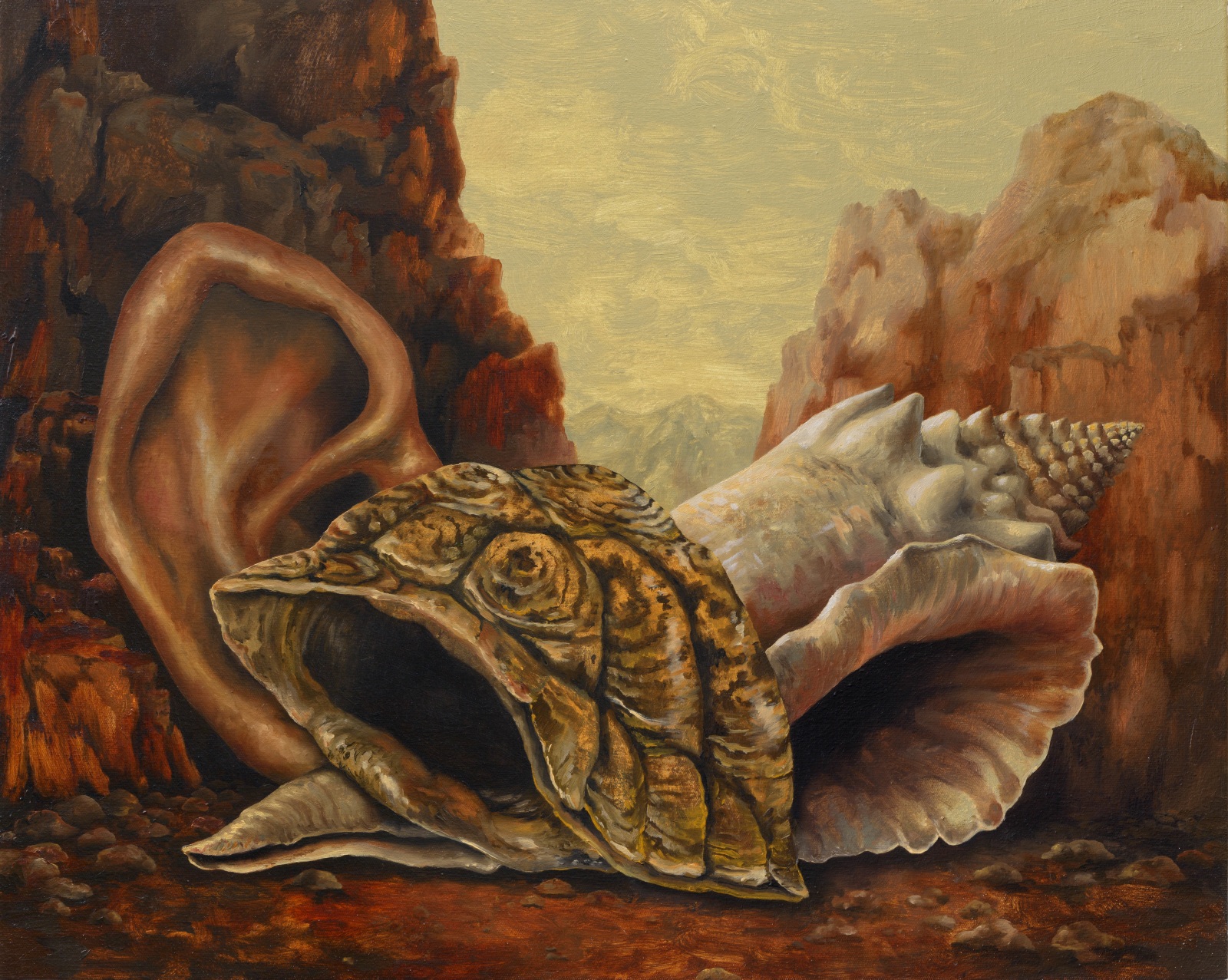Revered American artist Tschabalala Self is best known for her distinctive style combining fabric, collage, and painting with avant-garde printing techniques to explore ideas surrounding the Black body. Self constructs exaggerated depictions of female figures, layering shapes and textures to reflect the disparities and complexities that exist within individuals.
The animation critically considers the legacy of British colonialism in Asia, with Sikander using her signature approach of infusing Indo-Persian miniature paintings with a contemporary perspective. The work centers around a European gentleman in a red waistcoat, a symbol of British imperial power. Indian court architecture, Chinese cut-paper silhouettes and a watercolor map of South Asia all dissolve and reconfigure around him. Sikander based this figure on miniature paintings from the late eighteenth century depicting British East India Company officials.
The faceless “Company man” and his shifting surroundings allude to that corporation’s expanding presence from the 1600s to the 1800s in South Asia and China, where it blurred state, military and mercantile power. As images shatter across the screen and electronic beats by Pulitzer Prize-winning composer, Du Yun, explode on the soundtrack, viewers are invited to viscerally feel the reverberations of imperial activities across continents, oceans and time.

